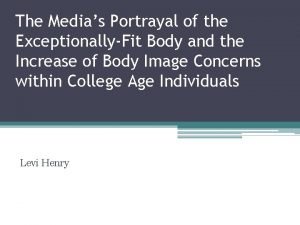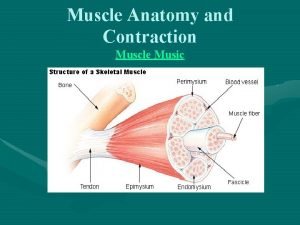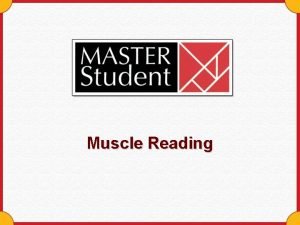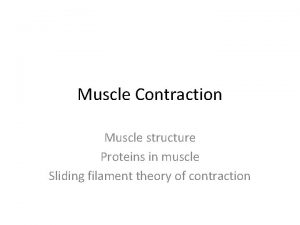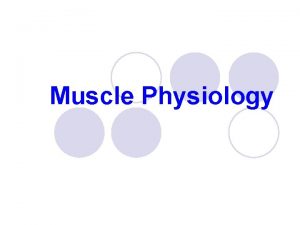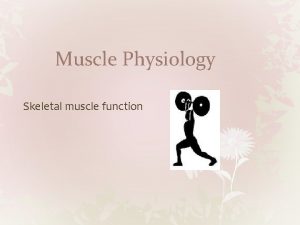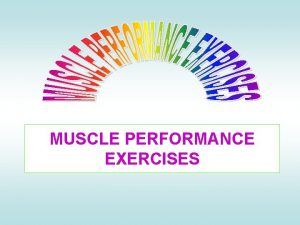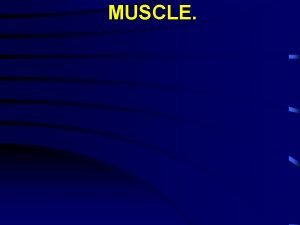MUSCLE DYSMORPHIA Christopher Hoang LT 2010 13 April










- Slides: 10

MUSCLE DYSMORPHIA Christopher Hoang LT 2010 13 April 2015

What is Muscle Dysmorphia? � � Muscle Dysmorphia is the condition where one is never content with the size of one’s muscles. This condition is most prominent in body builders. (men and women alike)

Uncommon Body Image Disorder � � � This condition is not as recognized as conditions such as Anorexia Nervosa and Bulimia Nervosa. The reason behind this is because through the naked eye, someone working out looks like they are simply chasing a healthy lifestyle. This condition is serious enough to be called the reverse of Anorexia Nervosa.

Reverse Anorexia Nervosa � � The similarities between the two body image disorders comes from Anorexia Nervosa being the fear of being too fat. This produces the problem where individuals starve themselves and do whatever necessary to become as thin as possible regardless of the process. Muscle Dysmorphia is the fear of being too “small” and doing whatever is necessary in order to gain muscle size. Sound similar?

Muscle Dysmorphia Broken Down � � Individuals with Muscle Dysmorphia have a fear of being too “small” and striving for a physique that is physically impossible to obtain. The problem within this issue is that even after obtaining the size previously desired, the process repeats itself by the individual believing that they are too small.

Crossing the Line � � You can tell that someone has crossed the fine line between body building and muscle dysmorphia when they begin to view themselves as smaller and weaker than they actually are. This disorder is very typical within individuals with self esteem issues.

Commonly Associated with Muscle Dysmorphia � � � Steroid Abuse Long hours at the gym Anxiety Exercising regardless of physical condition Neglecting anything or anyone for the gym

Prevention � � In order to help or prevent muscle dysmorphia, learning about the issue is the only plausible way to help an individual by understanding their mental state. Knowing they have a condition and allowing for treatment from a therapist may be necessary as well.


References � � � Pope, H. G. , Gruber, A. J. , Choi, P. , Olivardia, R. , & Phillips, K. A. (1997). Muscle dysmorphia: An underrecognized form of body dysmorphic disorder. Psychosomatics, 38(6), 548 -557. Choi, P. Y. L. , Pope, H. G. , & Olivardia, R. (2002). Muscle dysmorphia: a new syndrome in weightlifters. British Journal of Sports Medicine, 36(5), 375 -376. Mayville, S. B. , Williamson, D. A. , White, M. A. , Netemeyer, R. G. , & Drab, D. L. (2002). Development of the Muscle Appearance Satisfaction Scale A Self-Report Measure for the Assessment of Muscle Dysmorphia Symptoms. Assessment, 9(4), 351 -360. Dawes, J. , & Mankin, T. (2004). Muscle Dysmorphia. Strength & Conditioning Journal, 26(2), 24 -25. Davey, C. M. , & Bishop, J. B. (2006). Muscle Dysmorphia Among College Men: An Emerging Gender‐Related Counseling Concern. Journal of College Counseling, 9(2), 171 -180. Hurst, R. , Hale, B. , Smith, D. , & Collins, D. (2000). Exercise dependence, social physique anxiety, and social support in experienced and inexperienced bodybuilders and weightlifters. British Journal of Sports Medicine, 34(6), 43 Esco, M. R. , Olson, M. S. , & Williford, H. N. (2005). Muscle Dysmorphia: An Emerging Body Image Concern in Men. Strength & Conditioning Journal, 27(6), 76 -79. 1 -435.
